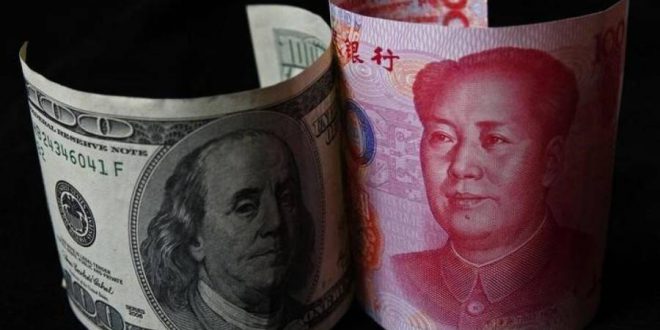It is now more than eight months since China launched its oil futures contract. denominated in yuan. on the Shanghai International Energy Exchange. In spite of forebodings and shrill alarms. the oil markets continue to function. and China’s futures have established themselves and overtaken in volume the dollar-denominated oil futures traded in Singapore and Dubai.
Of course. the volume of trades on the Shanghai exchange still lags behind that of the Brent oil futures traded in London and the West Texas Intermediate oil futures traded in New York. The Chinese oil futures contract is. however. being taken seriously by multinational commodity traders (like Glencore) and is priced in a manner comparable to the Brent and West Texas Intermediate indices. All this suggests China’s oil futures could bring the renminbi to the core of global commodity markets.
The launch of the oil futures contract can be anticipated to widen the scope for yuan-denominated commodity trading. As more of China’s oil imports come to be priced in its domestic currency. foreign suppliers will have more yuan-denominated accounts with which they can purchase not only Chinese goods and services. but also Chinese government securities and bonds. This can be anticipated to strengthen Chinese capital markets and promote the renminbi`s internationalization – or at least the progressive de-dollarization of the oil market.
For the past decade. China’s strategy for internationalizing the renminbi has involved greater reliance on the International Monetary Fund’s Special Drawing Rights as an alternative international reserve currency. The People’s Bank of China’s then governor. Zhou Xiaochuan. spelt out the strategy in an essay in 2009.
With new allocations of SDR to emerging industrial powers like China. the SDR. based on a basket of currencies including the renminbi. could serve not only as a development tool. but also as a means of international payment to rival the US dollar. In the wake of the 2008 global financial crisis. an SDR-centred international financial system became an enticing prospect for other countries as well.
Zhou’s 2009 essay galvanised these efforts. as he pointed to the evident inadequacies of the dollar-centred system (such as the impact of chronic US deficits) and outlined SDR advantages as an alternative means of international financial settlement.
The establishment of renminbi-based oil trading at a time when China and many other economies confront aggressive US tariffs. and possible further development of yuan-based trade in other commodity markets. suggests that the US dollar could face an unprecedented challenge to its hegemony.
It may. in the near future. no longer be seen as the anchor of the international monetary system. bringing to an end to what former French president Valéry Giscard d’Estaing famously called the “exorbitant privilege“ enjoyed by the US as a result of the dollar’s centrality in international trade.
If China’s ultimate goals include internationalizing the renminbi. its more immediate objective. prompted in part by US tariffs or sanctions on China and other countries. is de-dollarization of the international system. This is reflected in the shift to promoting an oil futures contract traded in Shanghai. which represents a decisive break with China’s SDR-focused strategy.
It is also a way for China to capitalize on the US trade sanctions that have been imposed against it – exposing liabilities in these sanctions. Both Russia and Iran. for example. are selling oil to China and accepting payment in renminbi. in response to actual or potential sanctions imposed on them by the US. They also have extensive imports from China. as well as other reasons for seeking strengthened ties.
China. Russia agree to boost ties amid American unilateralism
China no doubt views the emergence of yuan-denominated oil contracts as a means for Chinese companies to buy oil and gas in their own currency. thereby avoiding exposure to foreign currency fluctuations and firing a shot across the bow at the US dollar’s supremacy.
The fact that China is now the world’s largest oil importer. as well as the leading trading and manufacturing economy. lends weight to its “petroyuan“ and other initiatives to internationalize the renminbi. If China can withstand US counter-attacks. its efforts will lay the financial groundwork for the emergence of a multipolar world.
 Iran Energy News Oil, Gas, Petrochemical and Energy Field Specialized Channel
Iran Energy News Oil, Gas, Petrochemical and Energy Field Specialized Channel




